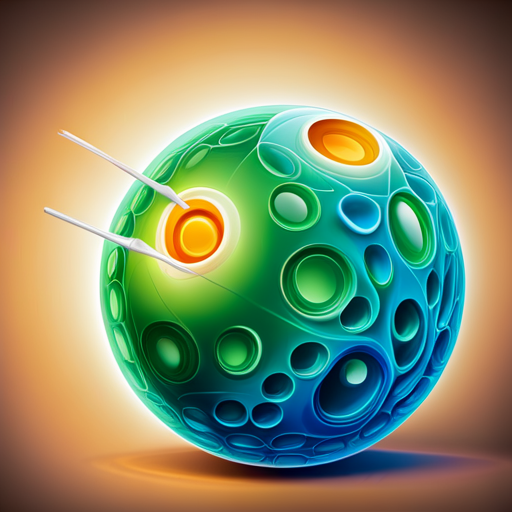Welcome to the Go Pickleballing Blog! As pickleball continues to gain popularity among players of all ages and skill levels, it’s natural to wonder about the construction of the essential components of the game. In this article, we will explore the topic of what are pickleball balls made of and provide you with an in-depth understanding of their construction. Whether you’re a beginner or a seasoned player, knowing the ins and outs of pickleball ball composition can enhance your overall playing experience.
Shop Pickleball BallsTable of Contents:
- The Importance of Pickleball Ball Construction
- Traditional Pickleball Ball Composition
- Indoor Pickleball Balls: Materials and Characteristics
- Outdoor Pickleball Balls: Durability and Performance
- Factors Influencing Pickleball Ball Performance
The Importance of Pickleball Ball Construction
Before delving into the specifics of pickleball ball composition, it’s essential to understand the significance of their construction. The design and materials used directly impact the ball’s bounce, flight, durability, and overall playability. We’ll explore why the construction of pickleball balls matters and how it affects your game.

All Surface Traditional Pickleball Ball Composition
Traditionally, pickleball balls have been constructed using a combination of materials to achieve the desired performance characteristics. The composition typically involves a durable plastic shell and a specific core material. Let’s explore each component in more detail:
- Shell Material:
- The shell of a pickleball ball is usually made of a hard, durable plastic. This material is chosen for its ability to withstand the impact and wear of gameplay. Common plastics used include polyethylene and a type of plastic called ABS (Acrylonitrile Butadiene Styrene).
Indoor Pickleball Balls: Materials and Characteristics
Indoor pickleball balls are specifically designed for play on smooth indoor surfaces, such as gymnasiums or dedicated pickleball courts. The materials used and their characteristics are tailored to optimize the ball’s behavior indoors. Here’s an overview:
- Shell Material:
- Indoor pickleball balls typically have a smooth plastic shell made of materials like high-grade polyethylene or ABS. The smooth surface allows the ball to travel consistently across the indoor court, facilitating precise shots and reliable performance.
Outdoor Pickleball Balls: Durability and Performance
Outdoor pickleball balls are designed to withstand the challenges of playing on outdoor courts, which often feature rougher surfaces and varying weather conditions. The materials and construction techniques used in outdoor balls prioritize durability and performance in outdoor environments. Let’s explore their characteristics:
- Shell Material:
- Outdoor pickleball balls feature a tougher and more durable shell compared to indoor balls. The shell is designed to withstand the abrasion and impact caused by outdoor play. Materials like high-grade plastics or reinforced polymers are commonly used to enhance the ball’s durability.
Factors Influencing Pickleball Ball Performance
Several factors play a significant role in the performance of pickleball balls. Understanding these factors will help you make informed decisions when selecting the right balls for your playing style and environment. Let’s explore the key factors that influence pickleball ball performance:
Learn more about the difference between Indoor Vs Outdoor Pickleballs
- Ball Weight:
- The weight of the ball affects its flight and behavior during gameplay. Generally, pickleball balls range in weight from 0.74 to 0.935 ounces (21 to 26.5 grams). Lighter balls offer quicker speed and better maneuverability, making them suitable for players who prefer finesse and control. Heavier balls provide more stability and are often favored by players who rely on power shots and smashes. Choose a ball weight that aligns with your playing style and preferences.
- Hole Patterns:
- The pattern and arrangement of holes on the ball’s surface impact its aerodynamics and flight characteristics. Different ball manufacturers use varying hole patterns, which can affect air resistance, spin generation, and overall ball control. Some common hole patterns include double, triple, or quad hole configurations. Experiment with different hole patterns to find the one that suits your gameplay style.
- Seam Quality:
- The quality of the seam, where the two halves of the ball are joined, can affect the ball’s durability and bounce consistency. Well-constructed seams ensure that the ball retains its shape and offers a reliable bounce. Look for balls with seamless construction or high-quality seams to ensure a consistent performance over time.
- Ball Compression:
- Ball compression refers to the amount the ball deforms upon impact. The compression level influences the ball’s bounce and responsiveness. Higher compression balls deform less and offer a livelier bounce, suitable for players who prefer faster-paced gameplay. Lower compression balls provide a softer feel and may be preferred by players who seek more control and a slower game tempo.
- Ball Surface Texture:
- The surface texture of a pickleball ball can affect its grip and spin characteristics. Balls with a textured or rough surface tend to generate more spin on shots, allowing for better control and shot placement. Smooth-surfaced balls provide a more consistent bounce but may offer less spin potential. Consider your playing style and the level of spin you desire when choosing a ball with the appropriate surface texture.
- Environmental Factors:
- Environmental conditions, such as temperature and humidity, can impact the behavior of pickleball balls. Changes in temperature and humidity can affect ball compression, bounce, and overall playability. For example, in colder conditions, balls may feel harder and have reduced bounce. Consider the environmental factors of your playing location and select balls that perform well under those conditions.
By considering these factors, you can select pickleball balls that align with your playing preferences and optimize your performance on the court. Experimenting with different balls and taking into account the playing environment will help you find the ideal ball for your game.
Pickleball ball construction plays a vital role in the overall playing experience and performance on the court. By understanding the materials, characteristics, and factors that influence the construction of pickleball balls, you can make informed decisions when selecting the right balls for your games. Whether you’re playing indoors or outdoors, investing in high-quality pickleball balls ensures consistent performance and durability. So, grab your paddles, find the perfect balls, and enjoy the thrill of pickleball to the fullest!












